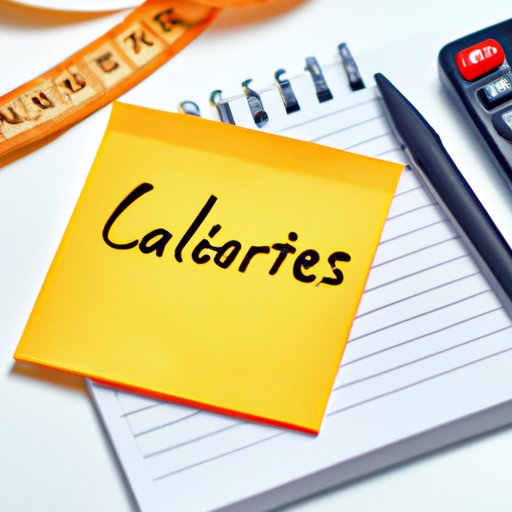Introduction
Do you know your body fat percentage? If not, you’re not alone. Understanding your body fat percentage can be challenging, but it’s crucial in maintaining a healthy lifestyle.
This article is intended for anyone who wants to improve their overall health and fitness by learning how to calculate their body fat percentage. In this article, we will explore the anatomy of fat, various methods for measuring body fat, and the implications of body fat on overall health and fitness. We will also offer practical tips on how to calculate your body fat percentage and normalize it to better understand your health and fitness goals.
The Anatomy of Fat
Body fat is a natural component of the human body necessary for insulation, energy storage, and hormone production. It’s made of adipocytes, or fat cells, which store energy as triglycerides.
There are two types of body fat- essential fat and storage fat. Essential fat is necessary for body functions such as hormone regulation, vitamin absorption, and insulation. Essential fat is found in body tissues such as the heart, lungs, liver, and muscles. Storage fat, on the other hand, is extra fat stored in adipocytes throughout your body that your body uses for fuel as needed.
Body fat distribution varies throughout the body. Some people tend to store more fat around their midsection (apple shape), while others store fat in their lower body (pear shape).
Measuring Body Fat
There are several methods for measuring body fat. Some of the most common methods include:
1. Skinfold Calipers: This method involves measuring the thickness of a fold of skin in different areas of the body using calipers. The thickness of the fold is then used to estimate the total amount of body fat.
2. Bioelectrical Impedance Analysis (BIA): This method involves sending a low-level electrical current through the body and measuring the body’s resistance to the current. Fat-free tissue conducts electrical current more quickly than fat, so the more resistance, the more fat is present in the body.
3. Dual-Energy X-Ray Absorptiometry (DEXA): This method uses X-rays of two different energy levels to measure bone density, lean tissue mass, and fat tissue mass. By subtracting the lean tissue mass from the total body mass, fat tissue mass can be calculated.
Each method has its pros and cons, but all can be used to estimate body fat percentage. However, to get the most accurate measurement, it’s best to use a combination of these methods and to have the measurements taken by a trained professional.
Why it Matters
Knowing your body fat percentage is essential for maintaining a healthy lifestyle. High levels of body fat can increase the risk of developing heart disease, diabetes, and certain types of cancer. Understanding your body fat percentage is critical in creating a personalized fitness plan that meets your needs. Maintaining a healthy body fat percentage has several advantages, including improved energy levels, better athletic performance, and increased confidence.
Practical Steps
Calculating your body fat percentage is not difficult but requires meticulous attention to detail. Here are the practical steps to follow:
1. Skinfold Calipers: Ask a trained professional to measure the thickness of the fold of skin on various parts of your body, such as your triceps, thighs, or abdomen. Use an online calculator to input the measurements, and the calculator will provide an estimate of your body fat percentage.
2. Bioelectrical Impedance Analysis (BIA): BIA devices are available for home use and are relatively easy to use. Follow the manufacturer’s instructions carefully and input your weight, height, age, and gender. The device will then provide an estimate of your body fat percentage.
3. Dual-Energy X-Ray Absorptiometry (DEXA): This method requires a trip to a medical facility. The X-ray machine will provide a highly detailed analysis of your body composition, including your body fat percentage.
Once you have your measurement, use a table or chart to determine what is considered a healthy range for your age, gender, and fitness level. For example, a healthy body fat percentage for adult women in their 20s-30s is around 21-33%, while adult men in the same age group should aim for a body fat percentage of 8-19%.
Normalizing Body Fat Percentage
It’s crucial to take individual factors such as muscle mass and fitness level into account when interpreting your body fat percentage measurements. It’s also important to understand how body fat standards vary based on age, gender, and other factors. Use a table or chart to determine what is considered a healthy range of body fat percentage for your group.
Staying on Track
To maintain a healthy body fat percentage over time, it’s essential to make lifestyle changes that are sustainable and conducive to maintaining a healthy weight. Here are some tips:
1. Incorporate exercise into your routine: Regular exercise improves muscle mass and decreases storage fat. Experts recommend at least 150 minutes of moderate-intensity exercise per week.
2. Eat a balanced diet: A diet rich in whole grains, lean protein, and healthy fats can help maintain a healthy body fat percentage. Avoid highly processed, high-sugar foods.
3. Practice Mindful Eating: Pay attention to your hunger and fullness cues and avoid overeating.
4. Monitor your progress: Keep track of your progress by re-taking your body fat measurements periodically. Use both the measurements and how you feel as markers of progress.
Conclusion
Knowing your body fat percentage is an essential aspect of maintaining a healthy lifestyle. It’s easier than you might think to measure, and it’s vitally important in creating a fitness plan that meets your needs. By following the practical steps outlined in this guide, you can track your body fat percentage, normalize it, and make sustainable lifestyle changes that will help you maintain good health in the long term.
